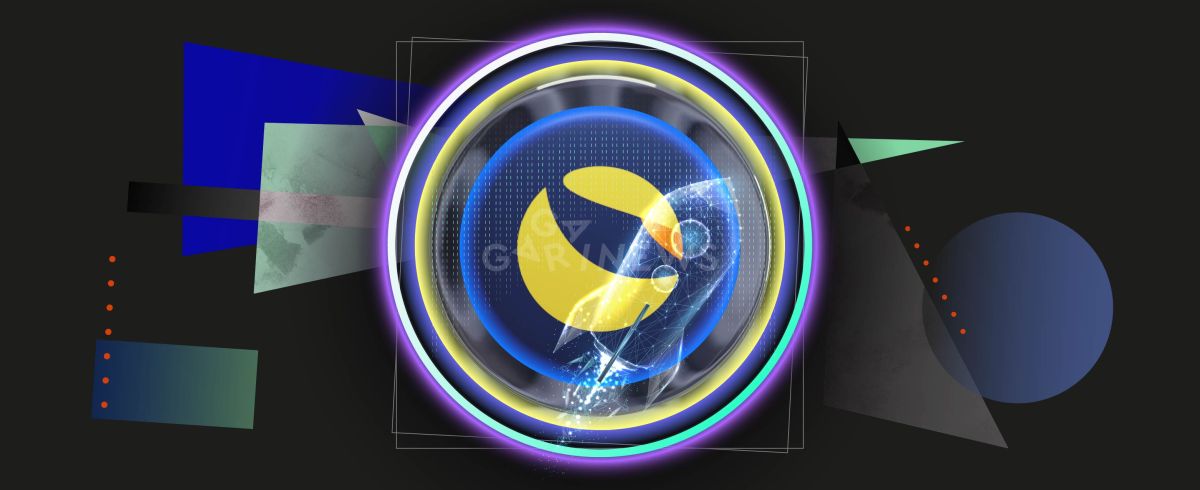LUNA 2.0: is there any chance to succeed again?

LUNA is a native Terra blockchain token. In May 2022, the coin depreciated, and investors incurred losses. As a rehabilitation plan, a new token was created and distributed in the format of Airdrop.
On this page
Terra blockchain now contains 2 tokens. The new coin inherited the ticker LUNA to avoid confusing users. The “old” one is Terra Classic (LUNC).
The first half of September was successful for the project: LUNC added 400% to the price, while the new token went up by 250%. Both coins are in the top 100 in terms of market capitalization.
LUNA token exchange rate (TradingView)
LUNC token exchange rate (TradingView)
Let’s analyze the perspective of each of the coins separately.
The main factor of LUNC (formerly “LUNA”) depreciation was the uncontrolled issuing and selling of tokens to ensure the recovery of the UST stablecoin rate. As of the time of writing, there are about 7 trillion tokens in circulation, and the coin’s price is $0.00035. Most DEFI, NFT, and the rest of the crypto projects switched to other blockchains.
Last week, Terra Classic’s quorum (management community) initiated an update. Every transaction will now have a “tax”. 1.2% of the value of any transaction will be burned, which is expected to increase the price.
Indeed, such a method could have a positive effect on cost. But only previous coin holders appreciated this move. From the point of view of new users, the decision looks doubtful: it turns out that the project’s main task is to rehabilitate itself at the expense of new investors, who will spend an extra part of their own funds to conduct transactions. At the same time, the maximum issue of LUNC is infinite, which makes the burning not so promising.
LUNC token issue data (Coingecko)
The development vector of the new LUNA is similar to the main goal of the LUNC token – to compensate for the losses associated with the collapse of the coin. Investors of the “old” coin will receive 70% of the issue. Airdrop will be done gradually within 29 months. The details are described by the team in the Medium article. That is, for 3 years, the main priority of the Terra blockchain will be to compensate for the losses of previous investors. In theory, this sounds right: after a failure, it is necessary to close the “debts” to users. But distributing all LUNA tokens as an Airdrop creates pressure on the price because holders usually sell coins immediately rather than continuing to hold them. And most projects will not resume activity on the Terra blockchain because of the severely damaged reputation.
The main obstacles to LUNA price recovery:
On September 14, it became known that a court in Seoul issued an arrest warrant against the head of Terra Do Kwon and five other people. Members of the Terraform Labs team are accused of violating South Korea’s capital markets laws. LUNA and LUNC tokens on the Terra blockchain reacted by falling 40% and 25%, respectively. From a global perspective, bringing the team to justice for the LUNA crash could positively impact the project, as it would show the public that the incident’s perpetrators have been punished.
LUNA’s drop amid news of an arrest warrant for Do Kwon (TradingView)
Only once all the problems are resolved can LUNA have a chance to succeed again. It is necessary not only to restore faith in the project but also to show investors and developers that LUNA has fully recovered and dealt with the consequences of the collapse.
The content on The Coinomist is for informational purposes only and should not be interpreted as financial advice. While we strive to provide accurate and up-to-date information, we do not guarantee the accuracy, completeness, or reliability of any content. Neither we accept liability for any errors or omissions in the information provided or for any financial losses incurred as a result of relying on this information. Actions based on this content are at your own risk. Always do your own research and consult a professional. See our Terms, Privacy Policy, and Disclaimers for more details.





























